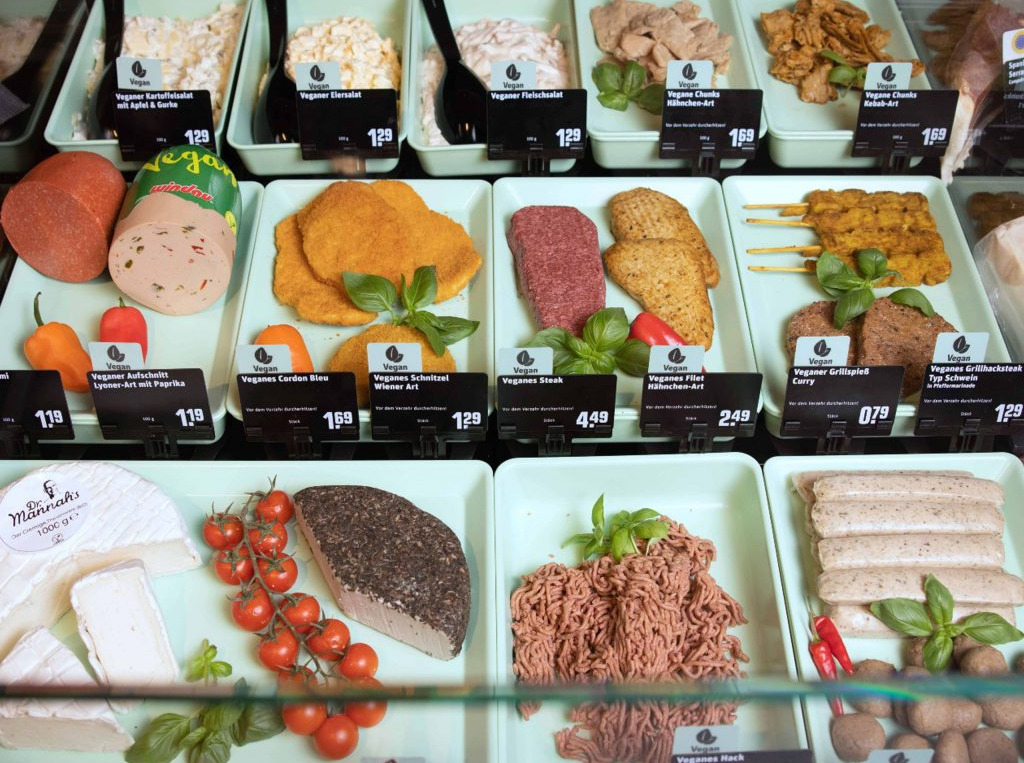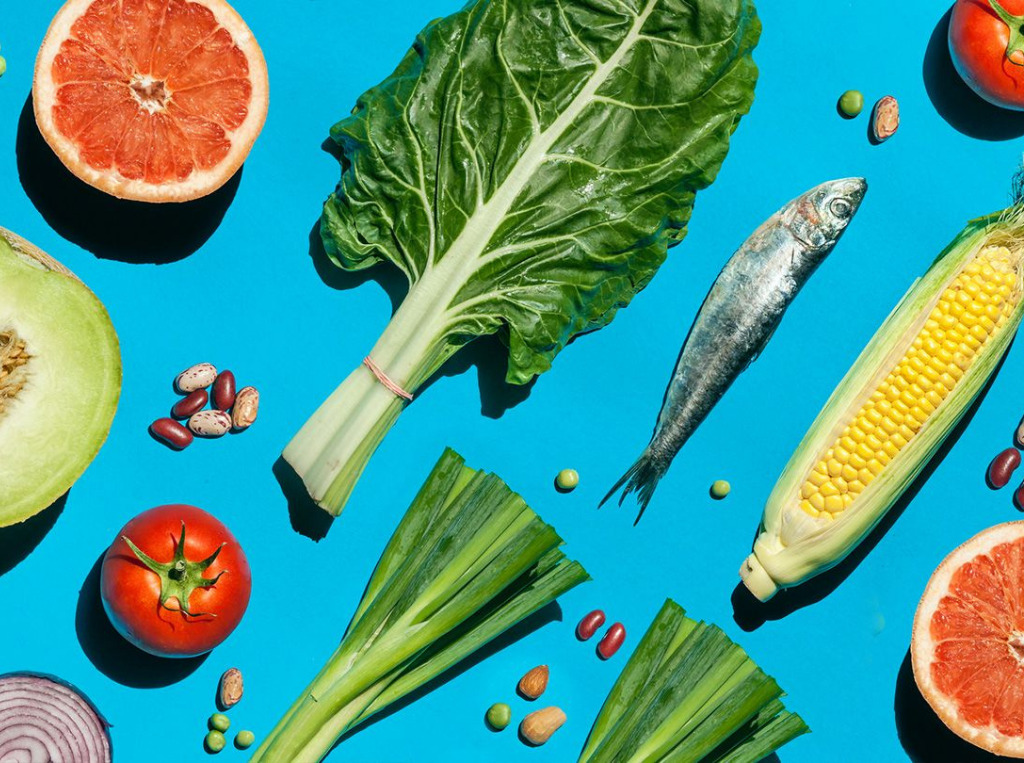Sexy Flexi: Europe Leads in Flexitarian Population As Asia-Pacific Catches Up, But US Lags Behind
7 Mins Read
When it comes to flexitarianism, Europe is leading the way, with Asia-Pacific catching up– but the US still lags far behind.
There’s no specific definition of what a flexitarian is. It could be a pescatarian who eats fish once a week, a vegetarian who consumes meat on occasion, or even a vegan who consumes meat or fish at times. It’s a – dare I say – flexible diet, and that’s exactly the point.
Amidst an ever-worsening climate crisis, the need to transition towards a more sustainable food system has never been clearer, and while getting the global population to go vegan is tricky, flexitarianism is crucial for a global transition towards a more planet-friendly food system. According to a global consensus of scientists, researchers and increasingly, policymakers, we need to get hundreds of millions of people to reduce their consumption of animal products, particuarly meat and dairy foods produced via conventinal livestock agrictulture.
The number of flexitarians around the world has been growing steadily, as people particularly look to reduce their meat intake for climate- and health-related reasons, and incorporate more plant-based alternatives that taste and feel similar to what they’re used to, all the while drastically lightening their impact on the environment.
But there are geographic divides when it comes to the number of flexitarians – some regions far outnumber or are outpacing others. A new study by the Stockholm Environment Institute calls for a more just transition towards plant-based diets, to ensure consumers, farmers, animals and the planet aren’t overwhelmed – read between the lines, flexitarianism could be the solution.
Europe leads the flexitarian race

In 2021, an EU-wide study by the Smart Protein Project found that flexitarians made up 30% of Europe’s population, with the figure rising to 40% when including vegetarians and pescetarians. It meant that over a third of consumers don’t view themselves as predominantly meat-eaters (if you don’t count seafood), as 57% said they want to gradually eliminate meat from their diets.
That was two years ago, but the patterns are similar, if not more prominent. Germany – which is the continent’s leading plant-based food market – has one of the largest flexitarian populations in the world, with 55% of its citizens identifying as such. Additionally, only 20% of Germans say they eat meat regularly, while 53% have purchased vegan alternatives to animal foods at least one, according to the country’s 2023 Nutrition Report.
“The topic of sustainability is important to more and more consumers: they want to know what ingredients are in the food and that it is produced in an environmentally and climate-friendly way,” said Germany’s minister of food and agriculture, Cem Özdemir, whose government’s National Nutritional Strategy involves a focus on plant-based diets.
Similarly, in Switzerland, a study published last week found that 24% of its population identifies as flexitarian. It also revealed that 21% consume a plant-based meat or dairy product at least once a week – and of these people, 42% eat conventional meat occasionally or regularly.
In neighbouring France, meanwhile, despite the government clamping down on plant-based meat with unprecedented labelling proposals and its championing of factory farming, a 2021 Kantar World Panel study found that 49% of households had at least one flexitarian among them – almost double the 25% figure in 2015.
And in the Netherlands, while meat consumption hasn’t reduced too much – going down from 50% to 44% between 2019-22 – 44% identify as flexitarians. But in the UK, there’s still lots of room for growth, with only 14% identifying as flexitarian, and just a quarter in total not identifying as regular meat-eaters.
APAC is the fastest-growing flexitarian region

The situation is similar in Asia-Pacific, with an August 2022 study calling it the fastest-growing region for the flexitarian market. There were promising signs a year before, with research by the Kerry Group finding that 62% of people in this region are interested in buying plant-based meat, with 44% looking to increase their intake of these products. Additionally, 32% said they wanted to reduce their meat consumption, with 28% reporting to have already done so significantly.
In February 2022, research by FMCG gurus found similar results, with 28% of Asians identifying as flexitarian. It echoes recent findings from a YouGov Australia poll, where 19% of respondents called themselves flexitarians, and a further 9% were vegan, vegetarian or pescetarian. Taste and health were the top priorities for people who are flexitarian, indicating the challenges and opportunities for food manufacturers in this space.
Meanwhile, a study from Queensland’s Griffith University last month found that 32.2% of Australians have reduced their meat consumption over the last year. Crucially, 71.3% said they either eat completely meatless diets, mostly plant-based or have some plant-based dishes in an overall omnivorous diet. And while 45.6% said they eat plant-based analogues to animal foods sometimes, 32.8% prefer sticking to traditional plant protein like legumes, tofu, tempeh, etc.
More recently, the Good Food Institute India’s first State of the Industry report for the country found that flexitarians are among the early adopters of alt-protein, as 89% who have bought alt-milk buy conventional dairy too, and 72% do the same for meat.
There’s a wealth of opportunities in this region, as one report earlier this year pointed out. APAC alt-protein startups are eating into North America’s dominant piece of the pie, reducing the latter’s market share from 92% to 67% over the past decade. And with Asian countries having a high market potential for alt-protein – a quarter of Chinese identify as flexitarian and a third plan to reduce at least one type of meat, while 26% of South Koreans want to cut their meat intake too – it could open up export opportunities for manufacturers in Australia and New Zealand.
The US is lagging behind

Speaking of North America’s diminishing market share, it seems the US is not heeding calls for eating less meat – as most Americans fail to see the connection between climate change and meat consumption. Americans consume 233.3g of meat a day, which is almost three times the maximum recommended amount by the Eat-Lancet Commission to achieve the UN’s Sustainable Development Goals and meet the targets of the 2015 Paris Agreement.
Moreover, just 12% of Americans are responsible for half of the country’s meat consumption, while a 2021 survey found that 59% of US citizens believe eating meat is just part of “the American way of life”. A Gallup poll earlier this year showed that the number of vegans in the country had hit a 10-year-low, while the figures for vegetarians dropped marginally from five years ago (note: the sample size was 1,000).
And in June, a US-wide survey by the International Food Information Council revealed that while 30% of Americans said they consumed more plant protein in the last year, and 23% and 32% reported eating less dairy and red meat, respectively, only 6% followed a flexitarian diet last year. Additionally, 5% followed a ‘low-carbon footprint/sustainable diet’ – but 40% never consume plant-based meat or seafood.
Meanwhile, poultry consumption has increased for over a quarter of Americans, while 43% said eco-friendliness didn’t have much or any impact on their buying decisions. Although, 35% said climate impact did influence their purchases, and 84% thought about it when buying food. But this needs to translate into action too – as one study revealed, Americans need to cut their meat intake by 82% if they’re to avoid climate disasters like the ones New York just went through.
The need for a smooth transition

Globally, one survey last year said one in four consumers are flexitarians. This demographic is an essential cog in improving our food system. The Stockholm Environment Institute research hints at the importance of this group by stressing that a transition towards plant-based eating must be well-planned.
The authors outline guiding principles to back up their theory, which touch upon phasing out policies and financial support for factory farming without worsening animal welfare and providing support to stakeholders to alleviate the impact of a transition through new job opportunities and economic diversification. As vulnerable groups might struggle to find jobs during the transition, governments should support these populations by addressing inequalities in the meat industry and involving these stakeholders in addressing these issues.
Flexitarians – and lowering how much meat and dairy we eat – could unlock a better and more sustainable food system.




